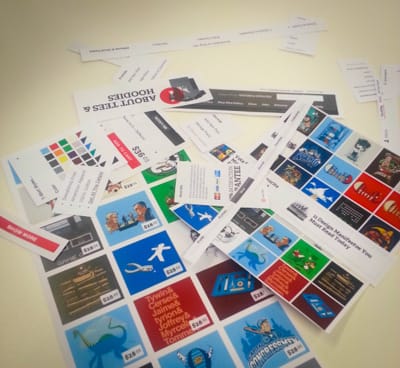User Research: Notice-ability

We’re always interested in finding out more about our users, how they interact with the website, and what it is they’re actually trying to achieve when they’re on it.
Now throw in some Arts and Crafts.
What we get out is what’s called a Notice-ability Study. This is an interesting User Research/UX technique which is designed to reveal which parts of a web page users actually notice. It is also incredibly quick to run – we’ve found we can run through one of these in less than half an hour.
From this you can start to make inferences about what parts of your design are actually important (rather than the parts you think are important), or conversely if users are having trouble noticing things that are needed to achieve the goals they have on that page.
Running a Notice-ability Study
Preparation
The idea is that you will (semi-)guide your users through the task or goal on your website that you are interested in. That way they are exposed to, and hopefully interact with elements of your design. If they then later remember those elements, then they were actually important.
To prepare for the study, identify the page you are interested in, print it, and cut out page elements so you have a pile of pieces:

Remove some of the pieces, and also print and cut out some pieces from other parts of your site, or other pages in the workflow, and mix them into the pile.
Running the test
Generally, the steps are:
- Get your test subject user to complete your task or use-case on your site. This can involve more than one page or interaction if required.
- Take away the computer
- Ask the user to then use the cut out pieces to re-create the page in question to the best of their ability.
- Let them know that they don’t need to use everything, and that some bits are missing.
- Let them know that if there is anything they feel should be there, and isn’t available as a piece, then get them to draw in a sketch of that element with the provided marker pen.
- Give them as much time as they need, and try to not guide them or give them any hints or feedback as they are doing the task.
- As always, make sure somebody in the room is taking notes, observing behaviours, or things the subject might say.

Review the test
After the test has concluded, and you’ve sent your subjects home (with a nice gift, perhaps a lollipop?), you should get together and talk about what was observed during the test. What page elements stood out for them? Was there anything important that was missed? Did they have much trouble remembering?
With some luck this information will help focus your design efforts, or let you know if there are gaps in how your page(s) work.